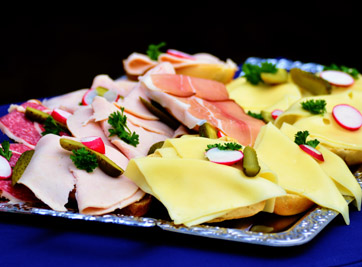
Identifiers
INS No. 101(i); Riboflavin, synthetic
INS No. 101(ii); Riboflavin 5′-phosphate sodium
INS No. 101(iii); Riboflavin from Bacillus subtilis
INS No. 101(iv); Riboflavin from Ashbya gossypii
E 101(i); Riboflavin
E 101(ii); Riboflavin-5′-phosphate
CAS No. 83-88-5
Physical Description
Riboflavin occurs as a yellow to orange-yellow, crystalline powder. Riboflavin from Bacillus Subtilis is prepared by submerged fermentation by Bacillus subtillis genetically modified for riboflavin overproduction. Riboflavin-5’-Phosphate occurs as a fine, orange-yellow, crystalline powder.
Common Uses
Riboflavin can be used to color convenient foods, soft drinks, cheese and cheese products, dairy products, bakery goods, fish products, canned fruits and vegetables, confectionery, desert powder, sherbets, jams and jellies, soups, mayonnaise and salad dressing, fats and oils, mustard and flavorings.
Specifications
JECFA
- Riboflavin
- Riboflavin 5′-Phosphate Sodium
- Riboflavin from Bacillus Subtilis
- Riboflavin from Ashbya gossypii
Codex GSFA Provisions
Riboflavins are included in Table 3 of the General Standard of Food Additives (GSFA), and as such may be used in specified foods under the conditions of good manufacturing practices (GMP) as outlined in the Preamble of the Codex GSFA.. The provisions are defined at the additive group level, and thus apply to the total content of the additives participating in this group: Riboflavin, synthetic (INS No. 101(i)); Riboflavin 5’-phosphate sodium (INS No. 101(ii)); Riboflavin from Bacillus subtilis (INS No. 101(iii); and Riboflavin from Ashbya gossypii (INS No. 101(iv)).
Regulatory Approvals
Safety Reviews
Safety evaluation of certain food additives (Ninety-second meeting of the Joint FAO/WHO Expert Committee on Food Additives) WHO Food additives series No. 83, 2022. Available online
EFSA ANS Panel (EFSA Panel on Food Additives and Nutrient Sources Added to Food), 2013. Scientific opinion on the re-evaluation of riboflavin (E 101(i)) and riboflavin-5-phosphate sodium (E 101(ii)) as food additives. EFSA Journal 2013;11(10):3357, 49 pp. Available online